
|
| Accept Cookies | Customize | Refuse Cookies |
Andre90s www.juzaphoto.com/p/Andre90s  |
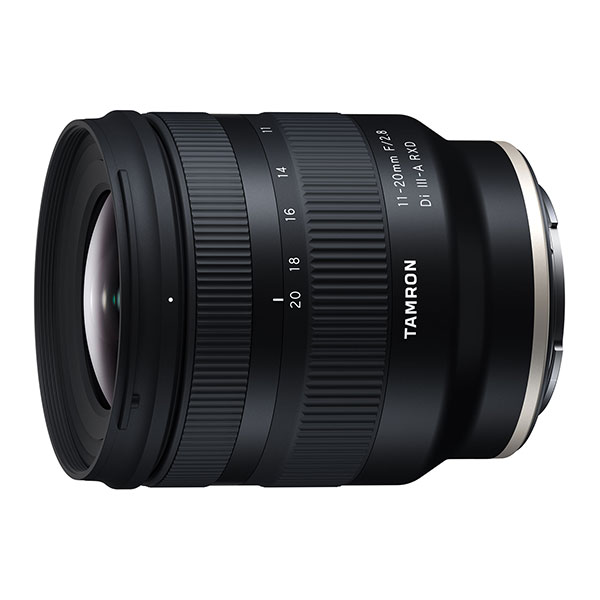 | Tamron 11-20mm f/2.8 Di III-A RXD Pros: Constant brightness, weight/size, overall quality, good build, focal range Cons: price of the new Italy Opinion: I think I'm one of the first to have it in Italy. Taken recently, this lens goes to constitute a quality alternative to the Sony 10-18 F4 which according to what we read, has a lot of variability between the models and in any case is not very bright on some occasions. Tamron has fully centered the choice to propose an 11-20mm focal length with a 2.8 aperture for the Sony APS-C system where there was actually a lack of a 2.8 fixed aperture wide zoom. From the tests I have carried out, the lens has an excellent quality, good flare resistance for such a lens, absent chromatic aberrations and slight open diaphragm vignetting that can be corrected directly in LR / PS (latest versions already profiled). What can I say, while waiting for the price for the Italian market to settle around € 700 (price at which I took it from a well-known Italian store), I would say that it is an optics that together with the other Tamron 2.8 zooms makes Sony's APS-C system very attractive and certainly more complete. Well done Tamron! p.s: I will update this review over the weeks, gradually accompanying the Juza gallery with samples. sent on September 27, 2021 |
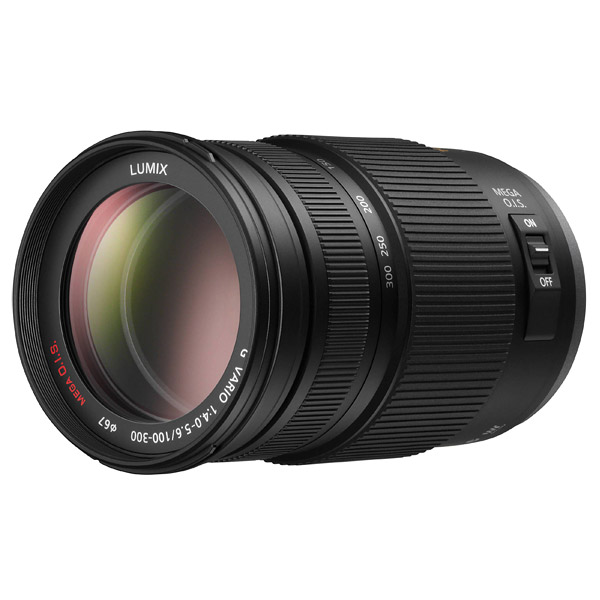 | Panasonic Lumix G 100-300mm f/4.0-5.6 OIS Pros: Focal range, price used, weight Cons: Chromatic aberrations never seen on such a lens, not tropicalized Opinion: Taken at just over 300 € used, for this figure you get a 600mm equivalent which is not a trivial matter. Unfortunately above 200mm you begin to see the obvious limits of this optics: sufficient nesting, chromatic aberrations present at any diaphragm in a very strong way. From its has a good weight/ size ratio and a bokeh that all in all is not normal, soft and pleasant. I recommend it to those who do not often go above 200mm but want to be covered on occasion. For those who often use the 300mm, it is better to turn elsewhere. To be taken used. sent on September 03, 2021 |
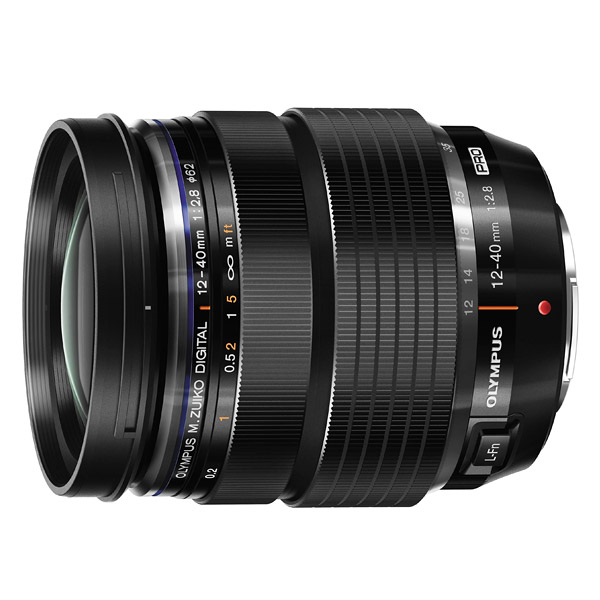 | Olympus M.Zuiko Digital ED 12-40mm f/2.8 PRO Pros: quality, focal range, macro functionality, construction Cons: hood intended to break in the coupling mechanism Opinion: Qualitatively superlative optics, with almost macro functionality, constant aperture and important focal range that makes this lens super versatile. The construction is from professional lens, the weight / dimensions are right for such an optics. The sharpness is not super incisive as on other lenses I have had (e.g. 16-55 fuji), but still very good already at 2.8. Unless you're looking for more versatility with the 12-100 F4, this lens is must have and is perfect as a travel companion. sent on August 26, 2021 |
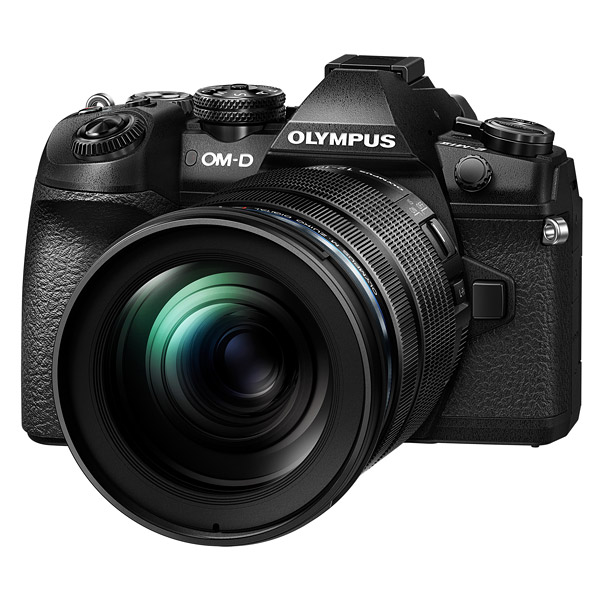 | Olympus OM-D E-M1 II Pros: Construction, low iso image quality, functionality, weight, ergonomics, amount of customizations and keys Cons: quality that degrades conspicuously with the increase of ISO (>1600), Autofocus not very performing, too many keys that can be accidentally pressed Opinion: Driven by the emotionality and the need to further reduce the weights of my Fujifilm kit (with which I have always had a perfect feeling), I sold all the previous equipment and took this camera by adding top optics such as the 7-14, the 12-40 and the 100-300 panasonic. What you immediately notice, is the care and quality of the materials together with the feeling of robustness due to a body built well and that is perfectly held in the hand without the need for additional grips. The autofocus coming from X-T3 I found it poorly performing, with shots often not in focus and a disappointing af-c (at the levels of an X-T2, perhaps even worse in AF-S). What made me turn up my nose is not so much the noise that occurs above 1600iso, but the quality of the same. On fuji I also shot at 6400 iso (in the gallery I have a landscape photo made at 6400 iso) getting clean images and with a pleasant noise. With the oly unfortunately even at 3200 iso there is an intrusive noise, full of dead pixels (even after remapping the same), especially if you make long exposures. Feeling limited by the sensor and an af not up to par, I gave everything away (fortunately without losing out, having bought used), and took a Sony a6500 that despite having a larger sensor, even has weights and dimensions smaller than m4/3. The question I asked myself is: is it worth investing in the m4/3 when you find more performing machines with a lower weight/ size ratio and now comparable costs? For me the answer is no. Of course, for those who work in extreme conditions and at low iso, the strength and weather resistance factor makes the system a valid choice. We hope that this system will not be abandoned in the future. sent on August 26, 2021 |
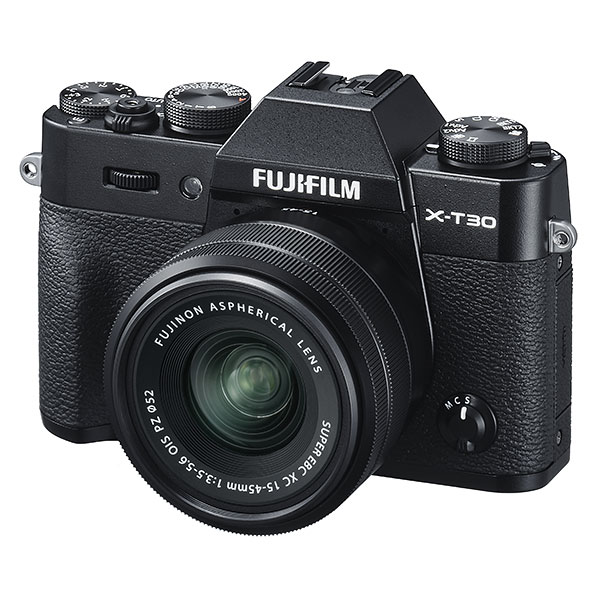 | Fujifilm X-T30 Pros: Light body, high iso hold, key arrangement, raf finally quality, Fuji XF system, outstanding jpeg, pad, touch, automatic mode selection key (never used, but could be great in some situations) Cons: unnecessary effects on the dial, better to equip yourself with additional handle, not top-not-to-top viewfinder (but better than that of the A7 III), dust-exposed sensor, single slot Opinion: I have been using this gem for several months after having x-T1, X-T2, Sony A7 III and Canon EOS R and with this little one I found what I was looking for: a light and compact body to use during my excursions but without giving up the quality of the files. The first set of fuji X machines however good, sinful in autofocus speeds and files that did not stand up to the competition much. With the 3 series of fuji these shortcomings have been eliminated and now the X-T3, PRO3 and T-30 finally have a responsive autofocus and excellent lychee files. The body is small as well as the viewfinder, but with some precautions you work without any problem. I find the battery life good, I usually never use more than 2 in the same day. The body is not tropicalized, but I also use it in the mountains and apart from a few grains of dust on the sensor (definitely less than the T2), I did not find anything dramatic. Just for comparison, the sensor of the A7 III got dirty much more easily. If you want to save something the T30 will give you the same quality as the big sister. If you have the chance, however, the T3 is built better, has the double slot and a larger buffer. Of the T30 I appreciated the insertion of the pad for focus, the excellent customization and operational speed and the touch finally useful. At the price at which it finds itself today I think there is nothing better. It's definitely a best-buy. sent on February 23, 2020 |
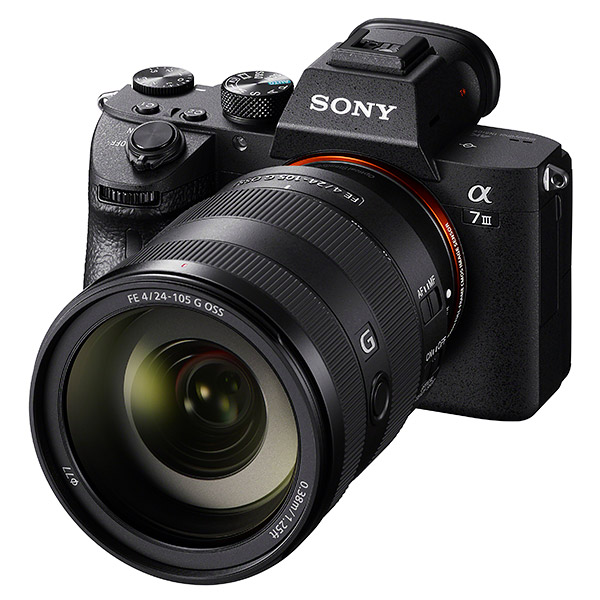 | Sony A7 III Pros: AF-C, battery that on ML is finally worthy of this name, high ISO hold, stabilizer, fullframe in a contained body Cons: Non-immediate menu that takes some time to be understood, outrageous viewfinder, crappy LCD, raw files to work heavily, sensor that gets dirty even without changing optics, cost of Sony optics greater than the competition, lack timer in Pose B Opinion: I changed camera often because in each I found some things that made me twist my nose (the best experiences anyway with Canon and Fujifilm) and, driven by the enthusiasm of dozens of owners of this machine and the problems of F/B focus that I have encountered With Tamron lenses on Nikon D750, I decided to return to ML in the hope of abandoning this type of problem. Mission successful? Undoubtedly yes, but now the problems are others. Firstly, having had the X-T2 Fuji, the first thing I noticed is the viewfinder and the LCD decidedly poor, which do not allow you to work well in the sun. There is no contrast to the focus point and under the sun you have to press the shutter button halfway to get it to color (only green) to figure out where it went to finish. The feeling is that you have a machine in hand technologically excellent, but not completely mature. In fact in the experience of use are many things that sooner or later, even for a few moments, we will be perplexed (such as during a night session, I discovered that during the pose B the screen remains black without even a timer to indicate the time Elapsed, with the need therefore to resort to the cellphone to have an external timer). The raw files in my opinion have a flat yield: the colors are different from other brands, very modern in the surrender (from this point of view for me the Canon files remain the best), the information goes strong in the shadows, decidedly less in the high lights where you present the Lim More obvious iti. In general, the starting files (Jpeg, RAW) are never particularly satisfactory and you have to put your hand to good in post to pull out something good. The AF-S since I own it don't use it anymore, because it's not as fast and accurate as the AF-C. The keys on the body are well arranged and with an additional grip improves the ergonomics. The Sony optics are well built, but have much higher prices than the competition and this makes it almost impossible to have a kit of optics 1.4 or 2.8, unless you have great economic possibilities. From this point of view you feel limited and often you have to tack on the market of used and third-party optics (Sigma, Tamron, and Samyang that is doing a good job). Who will read this review advice to try the car before falling on this model only by virtue of what is read online, with opinions of enthusiastic only because they chose the brand X rather than Y. I would like to give a vote of 8.5/10 at the A7 III , because despite high ISO and AF-C is perhaps the best mirrorless on the market, still lacks something and does not return a user-experience to me fully satisfactory. A positive mention to the battery, which really lasts a lot and seems inexhaustible, to the ISO that are a stop over the D750, to the body not very heavy and to Sony for having distorted the market of mirrorless cameras, bringing the competition to have to revise the Own programs. For those who still have doubts I would like to say that anyway, the future is mirrorless. Who is preparing to make a kit ex-Novo, has today a wide choice with Nikon, Canon, Fujifilm (user-experience beautiful, machines and optical compartment of level with contained dimensions and performance for many comparable uses) etc., then move to Sony for the world Mirrorless today makes less sense than in the past. Considering that on Nikon with an adapter you can keep the optics or adapt so many others at low prices, must reflect at least in part before choosing Sony a priori. sent on June 07, 2019 |
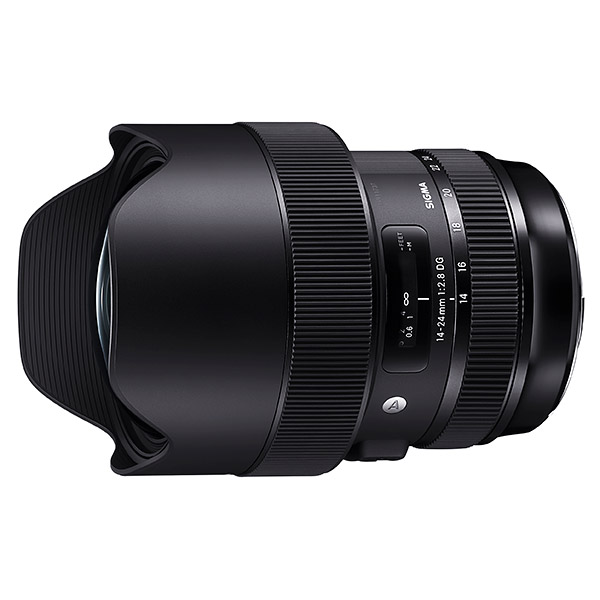 | Sigma 14-24mm f/2.8 HSM Art Pros: High sharpness even at the edges and optical quality in general, water lens treatment and dust proof really useful, import price, construction, built-in hood, lens cap that is finally not detached every second, focal range, bright, Cons: Suffers a little bit the side lights view the protruding lens, autofocus not really lightning, weight (but for a lens like that is normal), creates addictive, holder and filters apart expensive (I use filters and Haida holder and the expense has been fairly contained) Opinion: As a lover of landscape photography I am a fanatic of ultra wide angle lenses, so much so that I have always looked for the best in this focal range. I had several lenses of value, both zoom and fixed (Canon 16-35 f4 is, 17-40 F4, Fuji 10-24, 16 1.4 etc.) and I tried many other (like the 20 1.8 Nikon that at the level of sharpness is exceptional). I was undecided between the Tamron 15-30 VC, the Nikon 14-24 and the Sigma art. After so much research and reviews read (very few that are on the net on the 14-24 Sigma), I decided to risk anyway. After having tested it in the field, I can affirm that none of the optics listed above comes close to the quality that once again gives Sigma with the ART series: This 14-24 2.8 is very sharp even at full aperture, has a fantastic focal range for landscapes, is Built really well and has a lens treatment that is making me hate that of the Tamron G2 that I own; I used it under a waterfall with the lens that filled with water, and everything slips away smoothly and without creating halos. Same speech for the dust: Finally a lens that does not fill with dust in front of the glass even remaining firm in the backpack. What surprised me most however is the sharpness at the edges, almost comparable to the one present in the center! Thing I've never seen on an ultra-wide-up like that! It's a new standard in the field of landscape photography in my opinion, stuff for which pixels peeper would lose their heads. I use it on D750, the weight I have to say that you feel especially when hiking. But to this day I could not use anything else for my landscape photographs. The negative note concerns the reflections and flare that are created in the situation of Light side: Unfortunately from this point of view loses the comparison with optics such as the Canon 17-40 (which is not a sharpness of the monster, but does not suffer the flare at all) and also the 16-35. Finally a mention for many superfluous but for me it is a welcome surprise: the cap of the optics is not in classic with the levers to be hooked to the optics: it is a simple cap with internal gasket that "tucks" in front of the optics and is the first that I do not Cause anxiety, since almost all of the other optics are easily released. As for the filters, I recommend the Haida holder with Nano Pro filters, you will find import from ebay, do not cost absurd figures such as those nisi, and the quality is guaranteed. sent on November 05, 2018 |
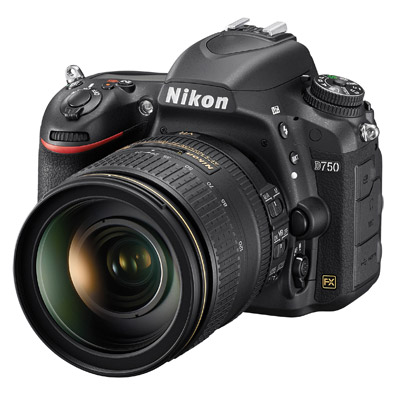 | Nikon D750 Pros: Small body, high ISO and dynamic range, overhead screen, autofocus with good performance, versatility for all photographic genres, FX sensor, new price (at the end 2018), must buy, ergonomics, tropicalization Cons: Layout of some keys (e.g. ISO), limited customizations, good for everything but without excelling in a particular genre, some absences from the older sisters (e.g. only 1/4000) Opinion: This machine at the price at which you can buy it today is the absolute best-buy of photography. Light body with a sensor still not exceeded. The improvements that must boast the new models are not so "abythe". The autofocus is quick and quite accurate but in some inconsistent situations (i.e. varies the MAF in critical conditions but static situation). I don't know if it depends on the optics I use (Tamron G2) or if it is a defect in the AF system. I took pictures at ISO 8,000 absolutely usable, but as a qualitative "limit" I believe that the 6,400 are the right compromise, the important in any case is to expose correctly avoiding recoveri that go over 1/2 stop at high ISO. At low ISO the dynamic range is naturally better, I would say almost impressive for the amount of information that you can recover and pull out of its files. I was very undecided between this and the D800, in the end I preferred the D750 because it allows me to move from portrait, to wedding, to sports photos keeping the results on good levels. Of course, it will not have the quality of a D810 for landscapes, a D5 for sports etc., but what you can do is all-around and you'll hardly be dissatisfied. It stops the competition (Canon in Primis) with a car that at the price to which you find it today is really a bargain, and I hope that it continues to go down so maybe I can buy a second body of reserve to little. Personally I do not appreciate the fact that with the Fn keys you can not change the ISO, key that is placed as on the series DX entry level, very but very uncomfortable. The absence of the joystick for focusing is not a problem, the directional keys are very good and precise. Just to make a comparison, compared to the X-T2 from which I come (and I sold as not satisfied by the ultra-wide lenses available for landscape), the D750 turns out to be slower at the operational level. If you are undecided whether or not to buy her! You won't regret it. sent on October 24, 2018 |
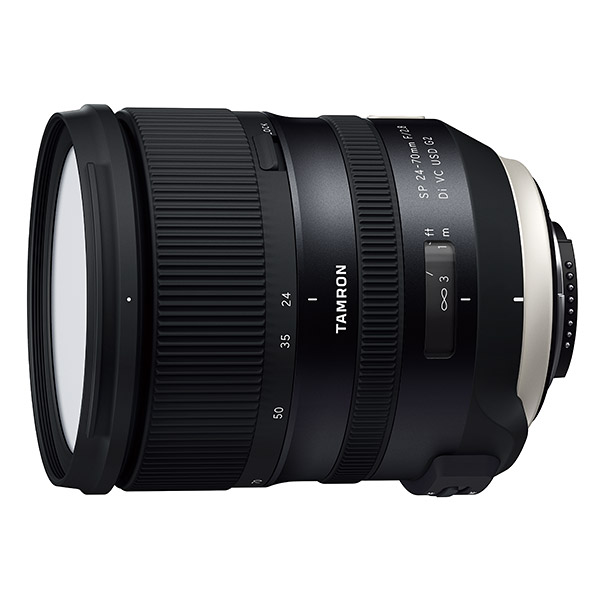 | Tamron 24-70mm f/2.8 Di VC USD G2 Pros: Sharpness (if calibrated), price compared to competition, construction, brightness, very comfortable focal range, optimum stabilizer, Lens hood Lock Cons: You have to calibrate it with the tap-in console to get the maximum (+ €80) and lots of patience, distortion at 24mm, noticeable drop in sharpness at 70mm, specimens not always with the same quality, F/B focus in many specimens, cost of tap-in console, lens without treatment for Dust (if you deposit a lot of it) Opinion: I updated the review of this lens after having calibrated it adequately with the TAP-in console (certainly not a walk and you lose some time). At the beginning I thought to sell because disappointed by the quality, especially the sharpness of optics. The problem was due to the F/B focus problems that afflict these G2 (even the 70-200 needed calibration); Once calibrated it showed all its character and excellent sharpness already at 2.8, more than many other optics that I've got to try. The construction is solid, the lens hood hangs on the optic which makes it impossible to lose once mounted, the cap for my taste has too many games and some times it takes off alone while it is in the backpack. The front lens attracts so much dust and has no treatments like the Sigma ART series so you just need a puff to remove everything. On this aspect you could certainly do more. On D750 my specimen had obvious F/B focus problems, especially at distances exceeding 1mt. I then bought the console to calibrate it but it was not so simple: you have to do many tests and not always when a value seems to be the correct one on the field maintains expectations. I had to buy Reikan Focal (€80!) to get support in the calibrazion and after hacking 2 days finally the G2 optics that I own are sharp and precise. The distortion is evident at the extreme focal lengths while more restrained towards the 35mm. At 70mm I find it too soft, so it is better to close at least F4 when shooting at 70mm. Unfortunately these problems of F/B focus complicate not just the use of a lens that is otherwise excellent in the Q/P ratio. Finally a special mention to the Tamron stabilizer that works well and above all, is silent. sent on September 21, 2018 |
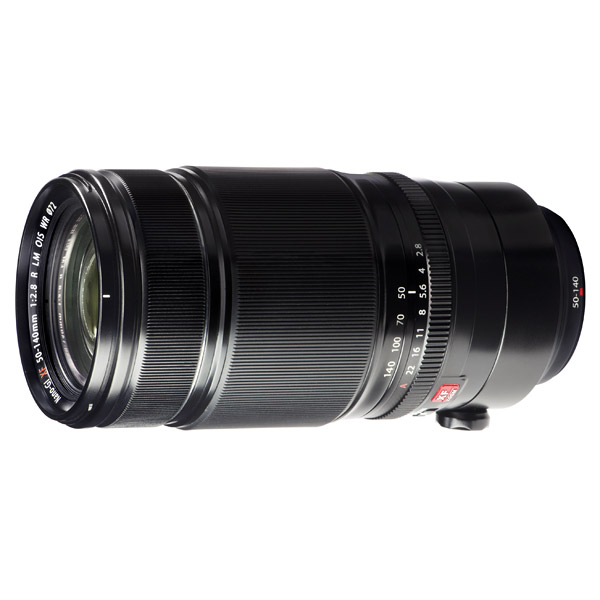 | Fujifilm XF 50-140mm f/2.8 R LM OIS WR Pros: Construction, optical quality, Nano Gi treatment, brightness, autofocus performance, high sharpness, quality stabilizer, important performance at all focal lengths/diaphragms Cons: Weight/size, cost, bokeh a little too engraved for my liking, hum always present even with stabilizer deactivated, without battery grip on X-T2 not really comfortable to use Opinion: This lens (comparable to a 70-200 on 35mm) is built really beautifully. Top quality materials, solidity, glass with Nano GI treatment that guarantee excellent performance even with reflected light. In short, on paper is really an excellent optics in everything and sharpness high even at 2.8. The stabilizer allows the use of unthinkable times otherwise for a focal of the genre and the autofocus to me warning is the fastest among the various Fuji optics. I sold it to move to 55-200, lighter (unfortunately the weight of 50-140 goes a bit against the philosophy ML) and performance very similar to closed diaphragms. Surely those who need a bright tele-zoom will remain fully satisfied. For me Partwith was not painful, both because I used it on a few occasions, both because the 60mm in more than 55-200 make me comfortable for landscapes. I can tell you that at the construction level the difference between the two is so much and you also feel just holding them in your hand both. But I was amazed by the bokeh of 55-200, which I find less nervous and more creamy, in short, really very pleasant. A small note on the AF motor or stabilizer (I still do not understand): Some say that the optics have two inside of which one always active that emits a noise continuously. When I sold it the buyer thought it was defective the optics. Ease all: It's just a feature of this 50-140. Not a problem in most situations, but at the theater maybe it could create a nuisance to someone. If I would recommend it: Yes, but only to those who need a fixed 2.8 with such high quality. For all the others the 55-200 lends itself well for various uses, even sports (main outdoor) and allows you to have + 60mm, which are certainly not few. sent on June 01, 2018 |
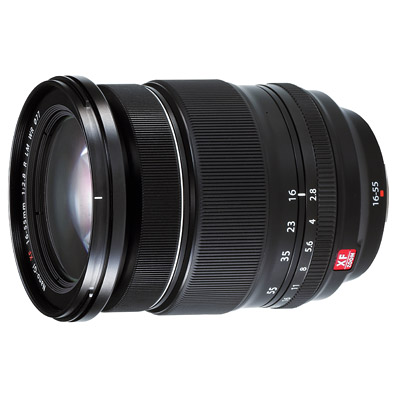 | Fujifilm XF 16-55mm f/2.8 R LM WR Pros: constructive quality, versatility, detail, image quality, resolution, wr, focal range, flare resistance Cons: lack of stabilizer, weight and size (but maybe it's hard to do better for such a lens) Opinion: I state that I had the 18-55 of which I have always spoken well because for what it costs, 80% of photographers will struggle to notice the differences between the two. But this 16-55 has a higher resolution (which is better with the sensor of the X-T2), at the edges is much better and has a constant image quality over the frame with a fixed 2.8 aperture. The 18-55 has its size and weight, the stabilizer and the price (now is used in 250 € or less - DEAL for this price) .rnrnIf the price difference is justified? I'm not so convinced, at least for amateur use. The discourse changes if the maximum is required and done for work. In that case 16-55 without any doubt. I've never tried a 24-70 Canon / Nikon (only Tamron) and I can not compare, but I can tell you that this 16-55 I use it in 70% of my shots (portraits, landscapes, etc.) without ever detaching it. You can really do everything with a very high quality. I also thought of selling itor to take the 18-55 and finance a fixed as 16 and 56, but in the end I always think that the versatility of this lens combined with its quality would make me regret a possible change. Reason why now remains in my kit together with 50-140 and 10-24 (only of this I'm not satisfied with the yield at the edges) .rnrnInoltre the 16mm still do a lot but very comfortable.rnrnHai a budget to finance a few things? 18-55. You are an advanced amateur photographer or a professional who does not care to have the maximum: 16-55. But both remain fabulous optics. sent on March 03, 2018 |
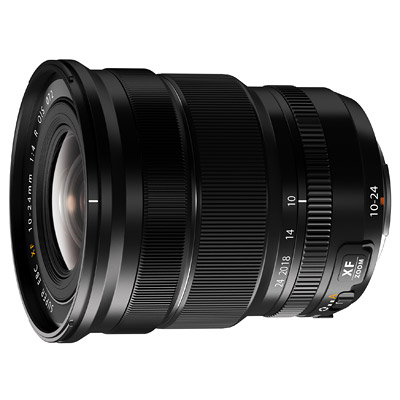 | Fujifilm XF 10-24mm f/4 R OIS Pros: Focal range, construction, cost used Cons: Obvious distortion, sharpness drop at the edges, useless stabilizer for the intended use of optics, not a worthy rival of competition, resistance to doing Opinion: This view is love-hate, there is no middle way. I was disappointed by the fall of sharpness beyond the norm at the edges (even F8 does not excite and is the second sample that I buy) and the change in yield to change of focus. I had the 16-35 f4 IS canon and it was a joy to use it, always clear and balanced colors.rnThis in my opinion is the worst optics made by fuji: designed for landscape designers, has all the flaws that a view for landscapes should not have (fall of sharpness at the edges, low resistance to flare, lack of wr). I took a 12mm samyang to replace it, waiting for the 8-16 which I hope will be at the height of the competition. At home fuji is missing an ultra-wide-angle zoom worthy of the name and at the height of other fuji lenses that are almost always higher than the competition.rnrnA optic warning to be redone completely in a second version. sent on February 05, 2018 |
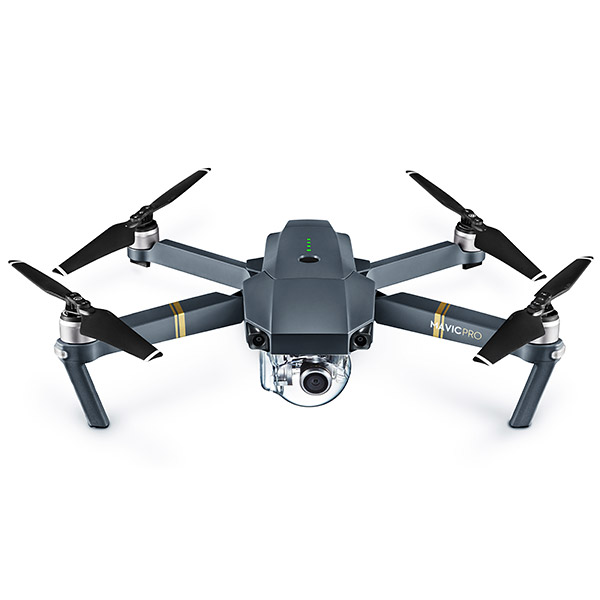 | DJI Mavic Pro Pros: Dimensions, in-flight stability and / or strong wind, good video / photo side, battery life, in-flight speed Cons: Receiving problems, Gimball a bit too delicate in my opinion, continuous DJI app crash (also in airplane mode on the LG G5), distance from land on landing, unpractical side, disturbing drop in sharpness in backlight Opinion: I owned this drone, the only one I had. Whatever it is, the quality is all and is evident. Powerful engines, it's not a toy and I really recommend flying outdoors only the first few times to make short flights to get familiar with the commands. Returning to Mavic PRO, I took the KIT Combo (which I recommend) and is worth the money spent. Unfortunately, I sold it because I prefer to take photos with reflexes and I was a bit disappointed with the photo side of the drone. On video nothing to say, the videos are of high quality. Unhappy photos for one used to shooting with a FF reflex are at a compact level a few years ago. Shadow / Lights recovery is enough, the backlight detail is mid-range smartphones, and in general, full-size files do not allow any quality work. However, in good conditions, you can still take good photos. From a technical point of view, my drone after a perfect first period started to miss the signal during the flight. Once again I saw him walk away for several hundred yards and then go back (I had put the return to home). Another time the signal that was reported to be excellent was gone and I had to ride around a lake for over 500mt to get the drone back under my control. From this point of view I do not know if I had a mischievous model or whether it is a firware issue or something else. I was disappointed and I never really felt safe in the reliability of the drone. At the end I saw the fear of losing it during the flights and the little use that I made I sold it to finance optics for my reflex (no choice was wiser). RnrnIn conclusion i tell you: if you are looking for a light drone to travel take it. If you have long videos and would like to take a different shot than usual take it. If you are a novice you do not waste your money. Take a less expensive model that probably after a while will tire you and sell it by losing less. RnrnSecure is an interesting and innovative product but not exempt fromwhich, unfortunately, undermine the final evaluation. rnVoto: 8 sent on October 02, 2017 |
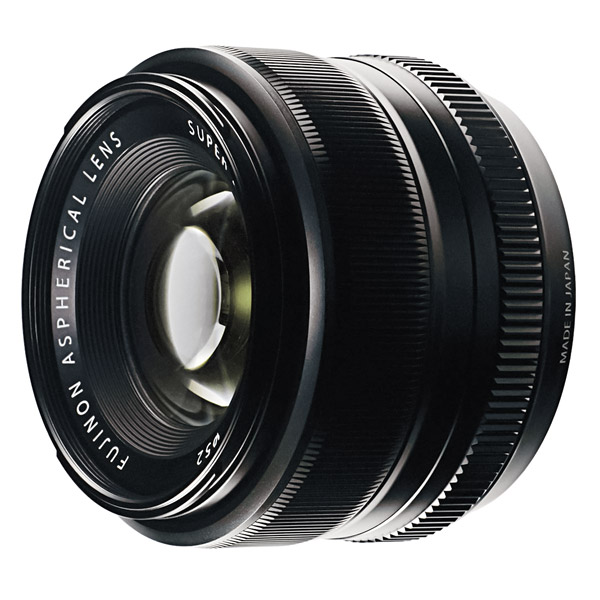 | Fujifilm XF 35mm f/1.4 R Pros: Sharpness, used price, contrast, construction, metallic hood, rendered across the frame, colors Cons: Frontal cap that can not be removed if left mounted hood, not WR, af speed compared to new version f2 (see below) Opinion: I've tried both the new 35mm f2 fuji on X-E1 and 1.4. In the end I preferred the 1.4 version I wanted since I had the X-T1 (then sold). Now I took an X-E1 for light outputs and because I was always with the weak vs fuji, despite having made a leap (but not so much) to Full Frame with Canon 6D. I love the Fuji system and adore the rendering of this optic. The Fuji optics simply do not find worthy opponents in the competition of the most well-known brands. This 35mm 1.4 besides being very bright and built really well, it has an AF which unlike what you say is not so slow, not as fast as the f2 version, but still faster than the 50 1.4 canon (right for a comparison) . By the way I use it on X-E1 which certainly is not the last model out. It is also capable of hanging in backlight, under really difficult conditions! The bokeh I still can not evaluate it well, I have to try with better light conditions to have a complete idea. The sharpness is also at 1.4 (mostly in the centRo), I think I can best finish by 2.8, where you can see a really amazing definition. The price in the used is very good (taken at 320 € shipped), the new however is not so high. I would have preferred a better cap, the hood I really like, I do not know if it's original and it's also in metal. But if you keep the attached hood you can not remove the cap, which I've noticed is annoying. Finally, I recommend all the Fuji series. Even though the zoom is great, the fuji fuels set for the X series are another planet. Maybe in the future I'll definitely be back on Fuji and complete the kit with all the XF series fixes. For now the 6D is not in question and coupled with the X-E1 and this 35 1.4 will have a great time to have fun. sent on June 06, 2017 |
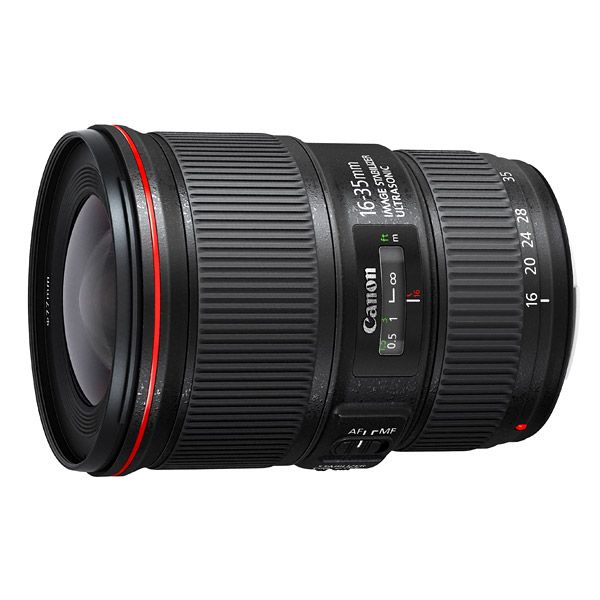 | Canon EF 16-35mm f/4L IS USM Pros: Image quality, stabilizer, new price (compared to used), fast AF, colors and contrast really beautiful, sharpness scary Cons: 16 mm quality, vignetting and loss of sharpness at F4 edges, the price between the used not beneficial to the new Opinion: Starting from the weak point: 16mm has a clear distortion and loses its sharpness and brightness to F4 (always at the same focal point). F8-13 resolves every problem. Bought at 860 € new (eglobal), I would say that compared to the used price is cheaper (it is hardly below 750). The quality of this jewel however is highlighted by closing the diaphragm: the sharpness becomes truly incredible so as not to require PP operations. The first time, used to 17-40, I applied a sharper mask and saw the picture "spoil"; The photo in fact was already clear of it and I had to reduce the effect of sharpness to 20% to not ruin the image. Unfortunately I am often at 16mm and this is the only weakness of this optic: the edges do not make the max (which is important for landscapes), however, there is always a slight decrease in sharpness and distortion that I solve by intervening with 'CaptureOne function. I'm learning to prefer 142.8 samyang for wider use. From 18 to 35mm is my favorite choice. I use it in 90% of my photos and never disappointed me. As a focus with 6D (which is certainly not the top in this field) I never got a wrong shot. The colors and contrast of this optic are perfection: what quality! Compared to 2.8 (I and II) seems to make much better this, if we then take the 2.8 III then the talk changes. If you are still looking for clarity, f4 will not make you regret the choice. I call it "my baby" (ref. 16-35) just for the care and love that I feel towards this optic. Inseparable partner of my exits. sent on May 13, 2017 |
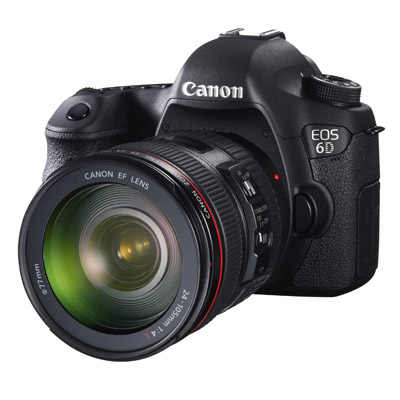 | Canon 6D Pros: Formidable sensor, price in used, file quality, shadow / lights recovery, high iso, fabulous central maf point, nice body to hold in hand Cons: Side-to-side focuses that are almost unusable or can not be relied on, only one SD slot, with uncomfortable exposure compensation Opinion: My first full frame. After having APSC Nikon and ML Fuji (always APS-C), this car despite having had years of shoulders remains really formidable. On high useless useless repeat the same solfa, it's awesome. ISO 6400 photos are clean, even 12,800 shots remain usable. Great car for those who like me do landscapes and some portraiture, but for situations where the side focus points are indispensable I do not recommend it. In this case the 5d mkiii will give more guarantees. Raw is the thing I appreciate most, about 20mb of weight, they contain a world inside. The 6D makes better than the 5d mkiii according to some image quality level tests, I did not try the older sister and I do not know how to express it. The only thing I would change with 5d mkiii is the focus points. Canon could do better from this point of view and I hope that the future upgrade of the 6d will give us a multipurpose machine. Of course if you buy it to mount on poor optics, it's worth taking a 7d with better optics. ThereRendered with 70-200 f4 IS and 16-35 f4 IS has exceeded all my most optimistic expectation. At the price it is today, it is a mustbuy, even for those looking for a second car body or wanting to launch into the world of FF. Again, evaluate the expense of the optics that cost as much as the car body. Should I recycle it? With eyes closed. For those who are waiting to buy the 6d mkii I just say it's pure madness. Taking it with this car is a huge pleasure and I doubt someone needs a bigger than 6400. If you wait to know AF side improvements, take 5d mkiii directly. Last note: I was undecided between this and the D610, eventually reading so many comparisons I preferred Canon. sent on May 13, 2017 |
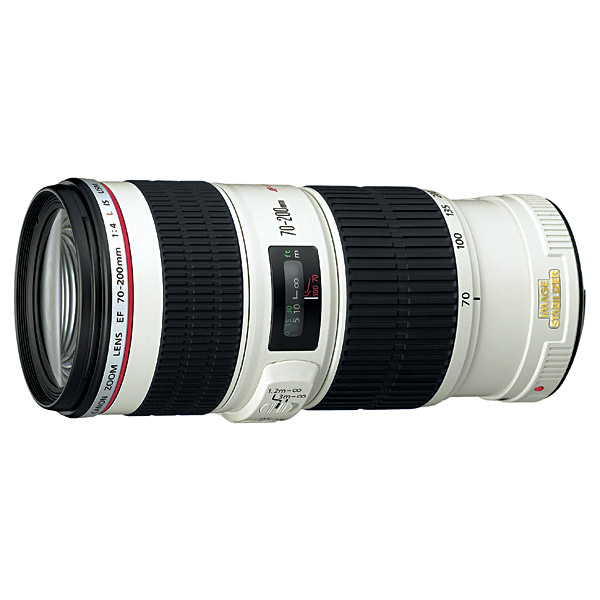 | Canon EF 70-200mm f/4 L IS USM Pros: Superb sharpness, great focal length for varied use, construction and solidity, all in addition to the used price, fast AF Cons: It's not 2.8, AF though quick sometimes has difficulty focusing close distances (even within the 1.2-1.5mt limit), 6D sometimes unsafe AF, not easy to use for those who like me landscapes Opinion: Bought after reading extremely positive comments. First click that I look at the PC completely restless. Scary sharpness that does not require any PP intervention. The same thing happened to me with the 16-35 f4 IS but the 70-200 seems to me to be much more incisive. It's a good one I use very little by taking mostly landscapes, I hope to use it for some portrait. Surely if you are looking for quality the 70-200 f4 is the right choice. The 2.8 is less clear (at least the first versions), the others cost considerably too much. sent on May 13, 2017 |
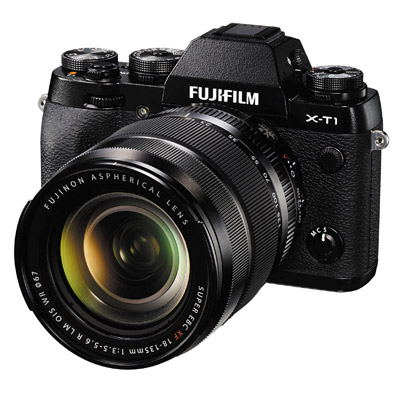 | Fujifilm X-T1 Pros: Body, aesthetics, image quality, ergonomics, functionality, analog-style dials, JPEG Cons: poor video department, the management of the RAF by some software, AF-C sometimes a little 'uncertain Opinion: I took this ML after reading a lot about it and it was love. I come from a D7000 and the jump was huge in terms of image quality. It 'a machine that either you love or hate it, once triggered the feeling, it is literally fast by its vintage look that makes it beautiful davvera even just to look at her. On the photo department is very complete, there I joined the 10-24 f / 4, 18-55 and 50-230 XC full kit. Still used on a few occasions, I must say that the image quality is all, even on the optical fuji XF. If I have to find a counter, it is the video department that is really poor. The video quality is good, but the room really manage without adjustments (to change aperture, ISO, etc. must stop recording). I expected something of this department worthy of the other qualities of the room, but at home have focused on Fuji X-X-T2 and T20 and abandoned probably more implementazioni.rnSicuramind will be my traveling companion for the next few years, the quality is there throughout, the RAF began to give less problems with the main and JPEG files are really good right out of the machine software. Used at temperatures around 0 ° C, because of the metal body, the car was cold but after diversse hours of use has not given any sign of insecurity / problemi.rnPer Finally, for those approaching the world of photography or looking for a body to be attached to a camera, the X-T1 is now a good deal (he also takes 500 €), for those who want to buy a single body, council contact the X-T2, X or ML-T20 Sony home (A6300-A6500). sent on February 04, 2017 |
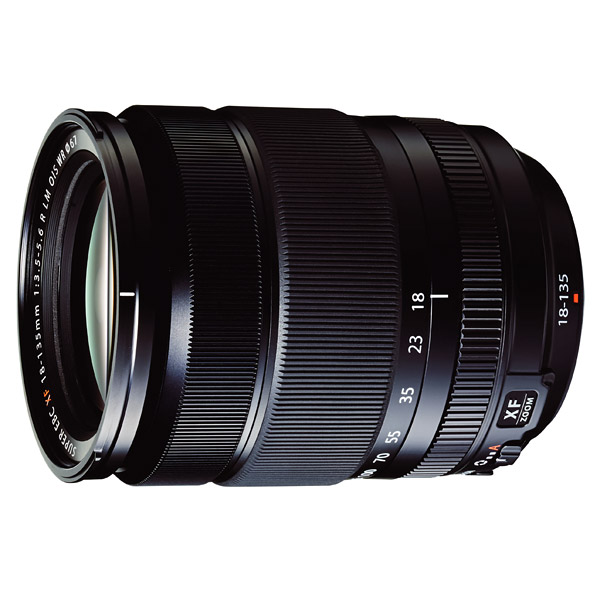 | Fujifilm XF 18-135mm f/3.5-5.6 R LM OIS WR Pros: image quality, sharpness, flare resistance, versatility, exceptional stabilizer Cons: no one in particular, I do not like personally zooms too pushed Opinion: Bought in kit with X-T1, I immediately thought of selling it because I thought that being a zoom pushed was of poor quality. I had to reverse immediately. The image quality is fabulous, just as the sharpness and is at a high level at all focal lengths. The stabilizer 5 axes allows you to take a free hand in the critical light conditions without blur, we also speak of 1/5 sec, but this depends on how much one has the steady hand. Surely to 1/15 sec most people manage to avoid mosso.rnrnPurtroppo I decided to sell it because the Fuji system is not cheap and I'm interested in more wide-angle lenses (which are those that use more). Taking always under the 30-50mm focal, it makes no sense for me tenerla.rnrnPer those seeking versatile perspective without losing picture quality compared for example to a 18-55, this is the ideal lens. Sure, it's darker than other optical home Fuji,but the stabilizer does its job and partly makes up for this lack. however, we talk about critical light situations. During the day, you probably will not have any problem. For those who lamente hood, I easily mount, fits perfectly and does not come out easily as many blame. Just the word fuji is up after installation, follow the white ball as an indication think is quick mounting. The construction materials to the touch are of excellent qualità.rnrnPer those seeking versatility is definitely the optics to have. sent on December 01, 2016 |
 JuzaPhoto contains affiliate links from Amazon and Ebay and JuzaPhoto earn a commission in case of purchase through affiliate links.
JuzaPhoto contains affiliate links from Amazon and Ebay and JuzaPhoto earn a commission in case of purchase through affiliate links.May Beauty Be Everywhere Around Me